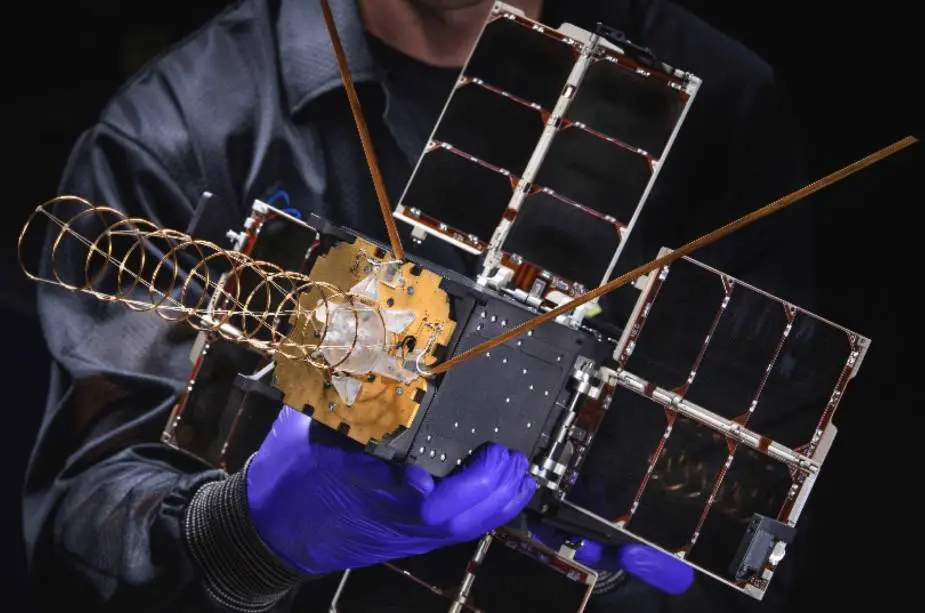US Army launches second Gunsmoke-J demonstration satellite
The U.S. Army is learning more about small satellites with the launch of its newest technology demonstrator. Jason Cutshaw (USASMDC) reports.
Follow Army Recognition on Google News at this link

Gunsmoke-J, a U.S. Army Space and Missile Defense Command and Assured Position Navigation and Timing/Space Cross Functional Team joint capability technology demonstration satellite, launches into orbit, March 22. (Picture source: U.S. Army)
Gunsmoke-J, a U.S. Army Space and Missile Defense Command and Assured Position Navigation and Timing/Space Cross-Functional Team joint capability technology demonstration satellite, launched into orbit, March 22. Gunsmoke-J’s experiments will show how its sensors can provide critical data and information key in multi-domain operations.
The launch is the second of three launches. The first Gunsmoke-J technology demonstrator launched Feb. 20 with the next launch scheduled in the coming weeks. “The command is very excited to have this capability,” said Chip Hardy, chief, Space Applications Division, Space Directorate, USASMDC Technical Center. “The experiments done on orbit will be the culmination of five years of hard work done by the entire Gunsmoke team, led by Mr. Eddie Johnson, in designing, building, integrating and testing these satellites. If successful, Gunsmoke could lead to a follow-on acquisition with a capability that could be a game-changer for the tactical warfighter.”
Gunsmoke-J is a joint capability technology demonstration executed by SMDC and APNT/CFT, and is sponsored by the Army and the Office of the Under Secretary of Defense for Research and Engineering. If successful, this science and technology effort will help inform future acquisition decisions.
Gunsmoke and potential follow-on small satellite systems are designed to provide information or sufficient data relative to tactical decision-making that is delivered in a timely manner.
Willie Nelson, APNT/CFT director, said Gunsmoke demonstrates the Army’s determination to maintain and lead in advanced capabilities, which will directly benefit the Army’s ability to operate with unmatched speed and precision. “Modernizing space requires a unity of effort,” Nelson said. “This launch could not have happened if it were not for the strong leadership at USASMDC and strong partnerships we forged across the Army Modernization Enterprise with our program executive offices, centers of excellence and the intelligence community throughout the development process.”


























